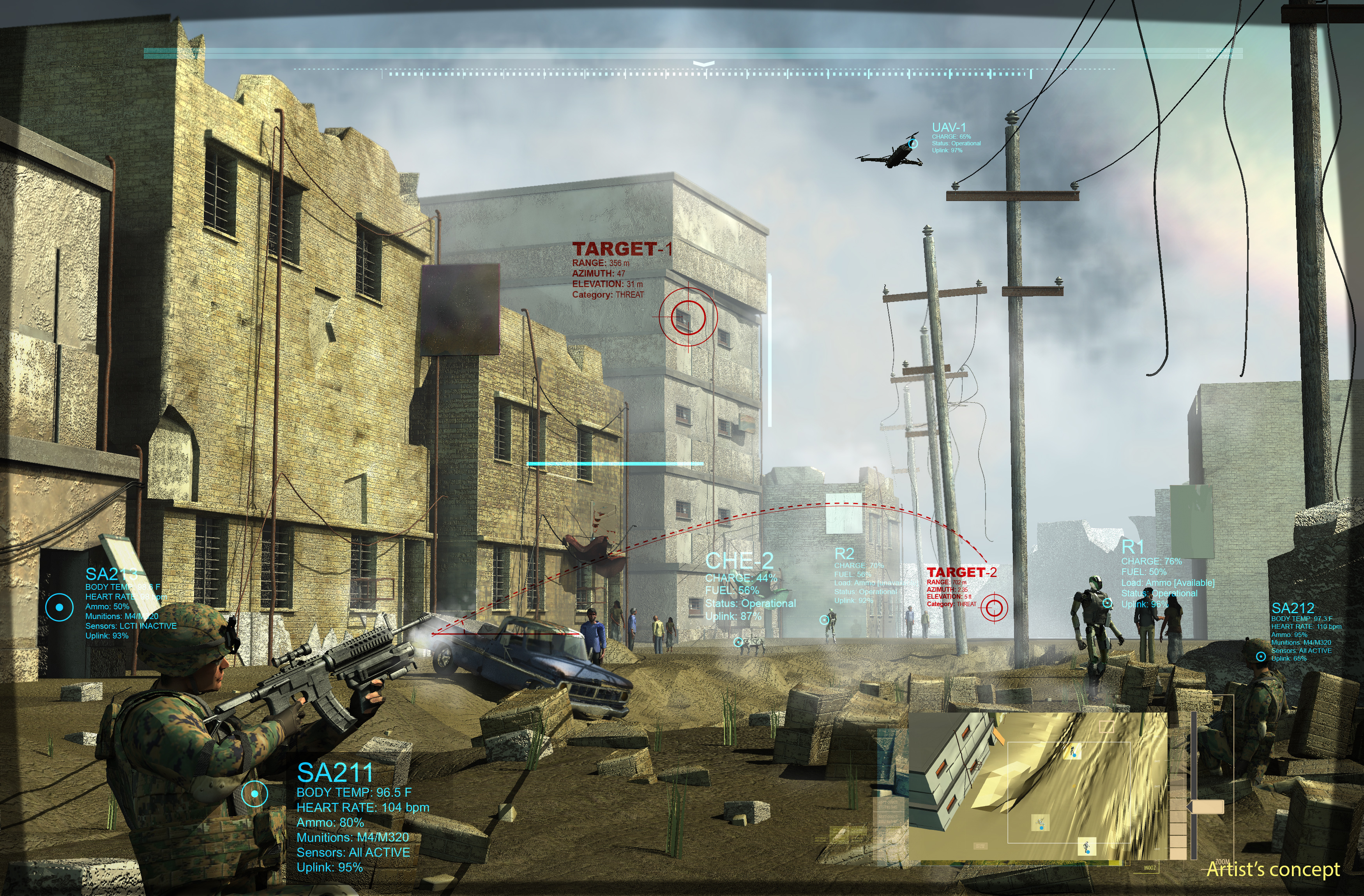The Army's Squad X project is a useless boondoggle. Here's how to fix it.
Get the Pentagon brass out of it


The U.S. Army wants to turn every soldier into a cyber soldier. It's like science-fiction warfare.
It's all very high-tech, and right now it's still a concept, called Squad X. But the basic idea is to give every soldier a heads-up display or helmet and enough computing and communications gear so they can have all the data about their surroundings in front of them in real time. Through the display, every soldier would know exactly where his mates are, where his enemies are, and would be able to seamlessly navigate the battlefield. As is, a foot soldier typically only knows what he can see directly in front of him with his own eyes.
This idea might sound familiar. That's because the Army has been talking about something like this for about, oh, 25 years.
The Week
Escape your echo chamber. Get the facts behind the news, plus analysis from multiple perspectives.

Sign up for The Week's Free Newsletters
From our morning news briefing to a weekly Good News Newsletter, get the best of The Week delivered directly to your inbox.
From our morning news briefing to a weekly Good News Newsletter, get the best of The Week delivered directly to your inbox.
As the military writer David Axe points out, like so, so many whiz-bang Army tech projects, the whole thing ran for way too long, ran way over budget, and ended up producing something useless. Land Warrior, the predecessor to Squad X, was way too heavy to be usable, and still used '90s-era tech even though prototypes were only produced in the smartphone era. And it was buggy. And did I mention expensive? It ended up costing more than $85,000 per soldier for something more low-tech than an iPhone.
Done well, these cyber-soldier rigs are like something out of a comic book or an action movie. They sound super cool. But do we need them?
For the foreseeable future, the U.S. will be involved in only two kinds of war: super high-tech wars against China or Russia, which will involve practically no foot soldiers, and super low-tech counterinsurgencies where these things aren't what's crucial. A counterinsurgency war isn't about winning firefights, it's about — say it along with me — winning the hearts and minds of the population.
And here's the thing. There's a much better way.
A free daily email with the biggest news stories of the day – and the best features from TheWeek.com
If the Pentagon had spent a fraction of its whiz-bang toys budget on cultural sensitivity, language, history, and law enforcement training for its foot soldiers, the war in Iraq might have turned out differently. The U.S. didn't lose in Iraq or Afghanistan because Land Warrior didn't work. They lost because the strategy was poor and because once the U.S. decided it was in a counterinsurgency, it didn't train most of its soldiers to do it properly.
Still, I concede, while these cyber-soldier get-ups should hardly be a priority, they are a worthy enough idea. After all, having constant situational awareness of your mates might, if nothing else, reduce incidents of friendly fire.
Here's how to do it right: Give a number of units already deployed in the Middle East and Afghanistan a budget for buying situational awareness equipment. Incentivize teams from 20 universities to build the equipment, only from off-the-shelf components. Let the soldiers beta-test it, let the teams build them quickly and cheaply, and let them iterate.
Samsung sells VR sets, so heads-up displays can be hacked together. An iPhone definitely has the capacity to do most of what Squad X calls for. You don't need five years in a lab. You need smart hackers from MIT and corporals willing to beta-test some equipment, and constant dialogue between those two.
This would almost certainly be cheaper than the status quo, because it would start outside the military-industrial complex. Military R&D often means too many people spending too much time and money in a lab making a prototype that doesn't end up matching the realities on the ground.
Most first versions of technology are terrible. What makes them turn into good technology is constant dialogue between the makers of technology and their customers. The fact that teams would be competing, and that teams on the ground would decide to buy this or that technology, would create the analogue of a marketplace, which produces superior outcomes not so much because of competition but because of constant feedback between consumer and producer.
Get the Pentagon brass out of it. Let the soldiers on the ground make the decisions about whose gear they like best.
Trust me, after two years, you will have something cheap, rugged, useful, and reliable, which will do 90 percent of what Squad X wants to do for less than 10 percent of the cost. You're welcome.
Pascal-Emmanuel Gobry is a writer and fellow at the Ethics and Public Policy Center. His writing has appeared at Forbes, The Atlantic, First Things, Commentary Magazine, The Daily Beast, The Federalist, Quartz, and other places. He lives in Paris with his beloved wife and daughter.
-
 How Bulgaria’s government fell amid mass protests
How Bulgaria’s government fell amid mass protestsThe Explainer The country’s prime minister resigned as part of the fallout
-
 Femicide: Italy’s newest crime
Femicide: Italy’s newest crimeThe Explainer Landmark law to criminalise murder of a woman as an ‘act of hatred’ or ‘subjugation’ but critics say Italy is still deeply patriarchal
-
 Brazil’s Bolsonaro behind bars after appeals run out
Brazil’s Bolsonaro behind bars after appeals run outSpeed Read He will serve 27 years in prison
-
 Americans traveling abroad face renewed criticism in the Trump era
Americans traveling abroad face renewed criticism in the Trump eraThe Explainer Some of Trump’s behavior has Americans being questioned
-
 Nigeria confused by Trump invasion threat
Nigeria confused by Trump invasion threatSpeed Read Trump has claimed the country is persecuting Christians
-
 Sanae Takaichi: Japan’s Iron Lady set to be the country’s first woman prime minister
Sanae Takaichi: Japan’s Iron Lady set to be the country’s first woman prime ministerIn the Spotlight Takaichi is a member of Japan’s conservative, nationalist Liberal Democratic Party
-
 Russia is ‘helping China’ prepare for an invasion of Taiwan
Russia is ‘helping China’ prepare for an invasion of TaiwanIn the Spotlight Russia is reportedly allowing China access to military training
-
 Interpol arrests hundreds in Africa-wide sextortion crackdown
Interpol arrests hundreds in Africa-wide sextortion crackdownIN THE SPOTLIGHT A series of stings disrupts major cybercrime operations as law enforcement estimates millions in losses from schemes designed to prey on lonely users



